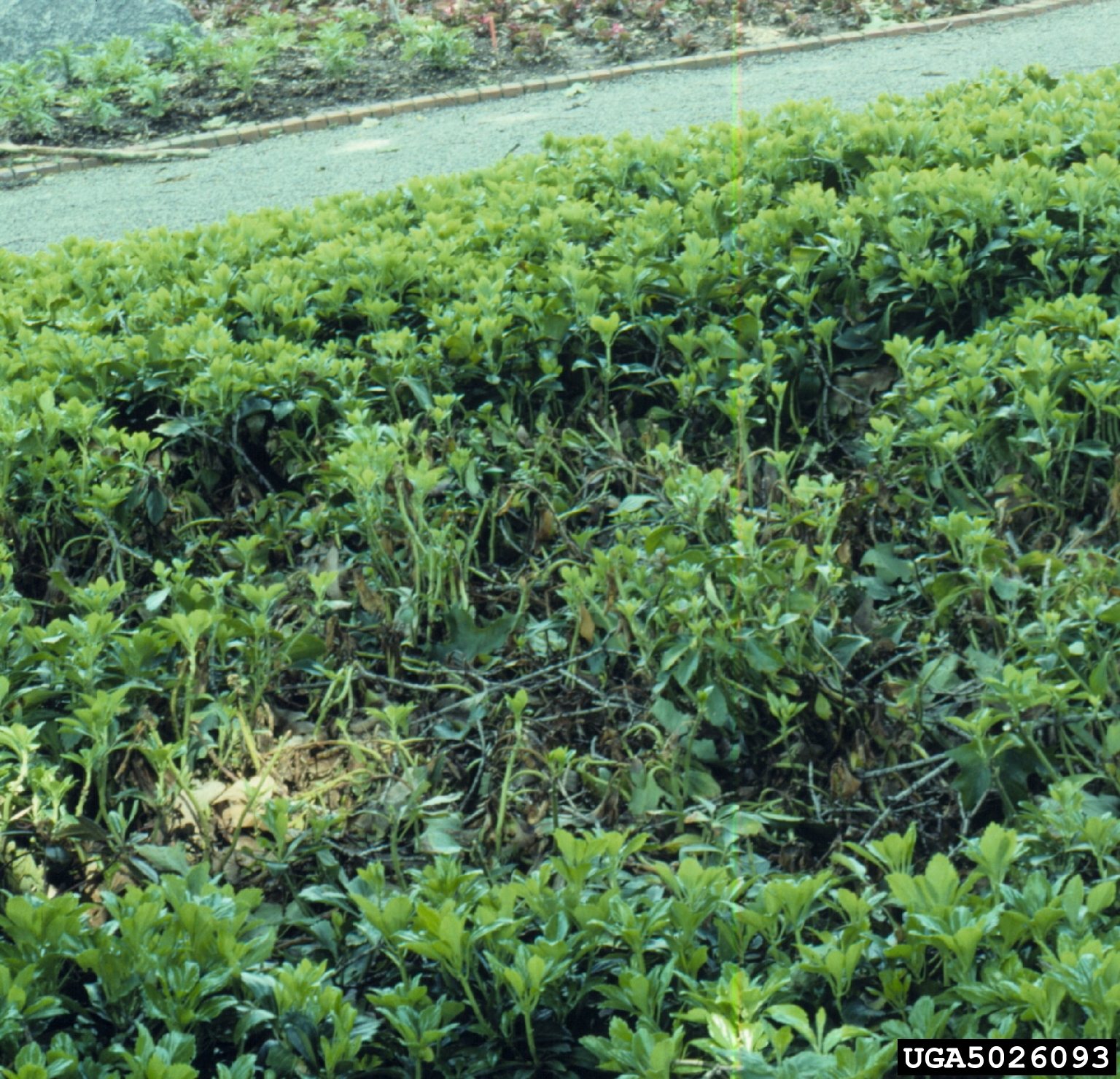What Is Volutella Blight: Learn About Volutella Blight Control


What is volutella blight on plants? Also known as leaf and stem blight, volutella blight is a destructive disease that affects pachysandra plants and boxwood shrubs. Early diagnosis and vigilant plant care are the keys to volutella blight control. Read on to learn about treating volutella blight.
Volutella Blight Symptoms
Initial symptoms, which appear in early spring, frequently resemble winter injury. Volutella blight symptoms begin with delayed emergence of new growth and patches of wilted, discolored, yellow, red, or bronze leaves that gradually increase in size before turning black and falling from the plant. Greenish brown, water-soaked cankers girdle the stems, causing the plant to shrivel and wilt as the cankers turn dark black or brown. Pinkish fungal spores often appear during humid weather.
Volutella Blight Treatment
Prune damaged growth. Wipe cutting tools with bleach solution or rubbing alcohol between each cut to prevent spread of disease. Shake or rake the plant to remove infected leaves, then destroy the debris. Although fungicide sprays won’t cure volutella blight, application of lime sulfur or copper sprays may help in case of severe infestations. Spray plants just before growth appears in spring, and then continue throughout the growing season as directed on the label. Plants may benefit from an additional volutella blight treatment in autumn to protect late summer growth. Remove plants if the blight is overly severe. Replace them with more disease-resistant shrubs or groundcovers.
Volutella Blight Control and Prevention
To prevent volutella blight, keep plants healthy and minimize stress with regular trimming, which improves air circulation and increases penetration of sunlight. Trim plants during dry weather. Water plants in the morning so the foliage has plenty of time to dry before temperatures drop later in the day, as volutella blight is more prevalent in wet, humid conditions. Avoid heavy mulch, which may keep the growing environment overly damp. Treat insect infestations as they appear, and clean beds and rake plant debris in autumn.
Gardening tips, videos, info and more delivered right to your inbox!
Sign up for the Gardening Know How newsletter today and receive a free copy of our e-book "How to Grow Delicious Tomatoes".

A Credentialed Garden Writer, Mary H. Dyer was with Gardening Know How in the very beginning, publishing articles as early as 2007.
-
 Looking For Plants To Give You The Soft And Fuzzies? Try These 5 Fuzzy Leaf Plant Options
Looking For Plants To Give You The Soft And Fuzzies? Try These 5 Fuzzy Leaf Plant OptionsLovers of texture, drama, silver foliage and tactile plants will adore these special sensory garden additions. These fuzzy leaf plant options will leave you all aglow
By Susan Albert
-
 Get Ready For A Summer Of Hummers! Grow These Full Sun Hummingbird Plants and Flowers
Get Ready For A Summer Of Hummers! Grow These Full Sun Hummingbird Plants and FlowersIf you’re lucky enough to enjoy a sunny backyard, make sure you are maxing out on your pollinator opportunities and grow these full sun hummingbird plants and flowers
By Tonya Barnett